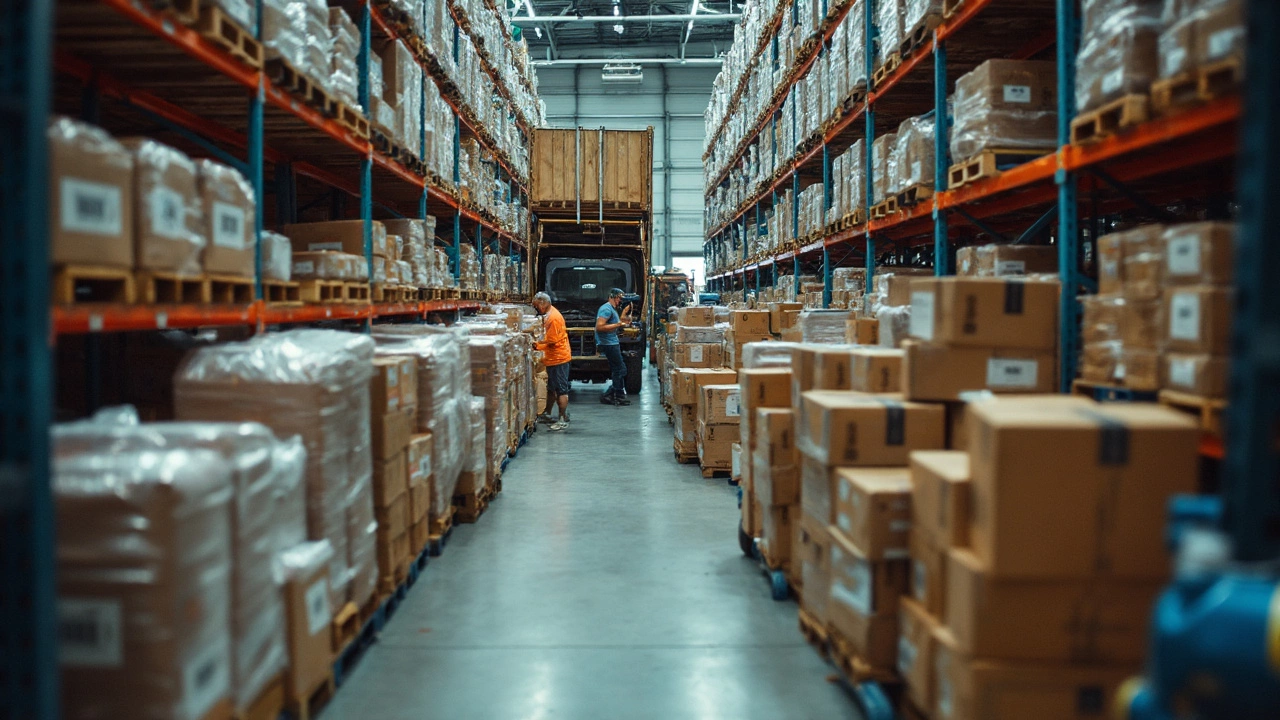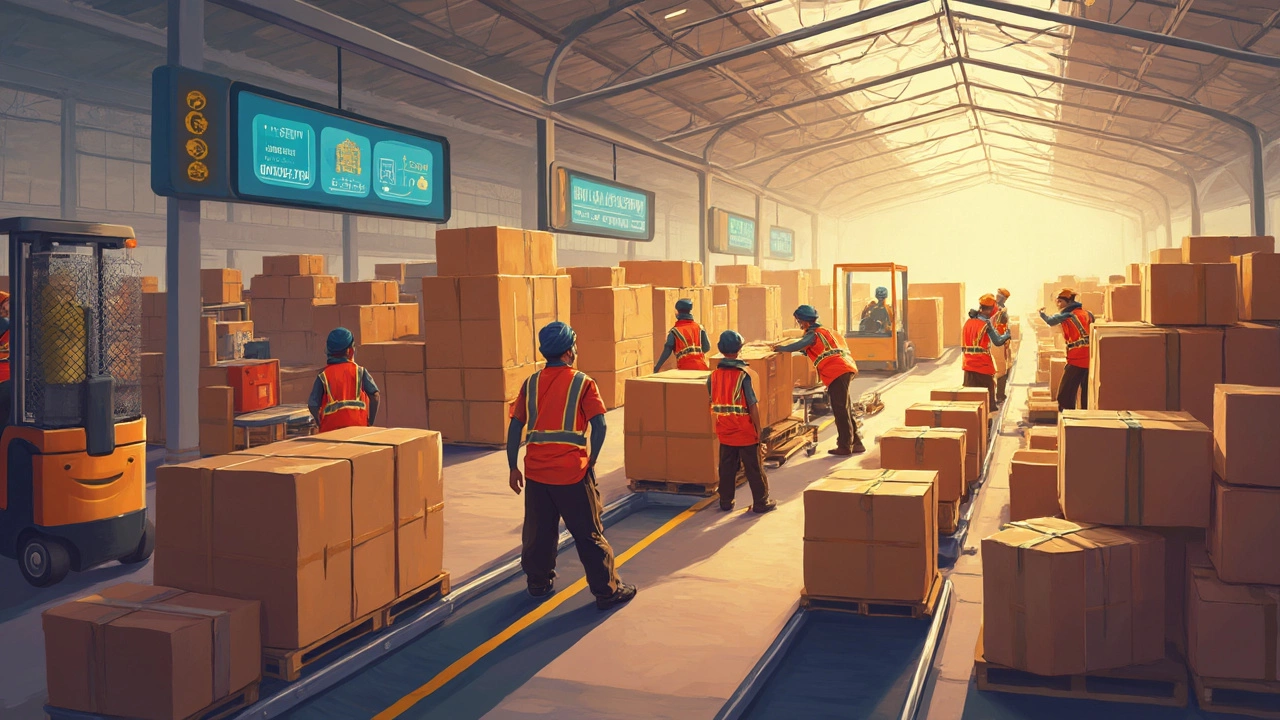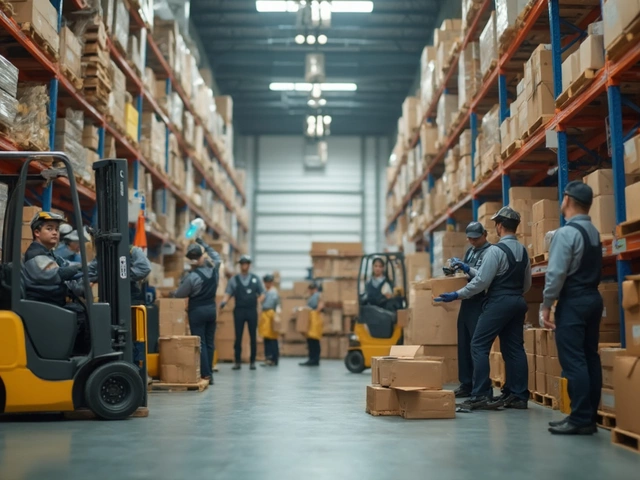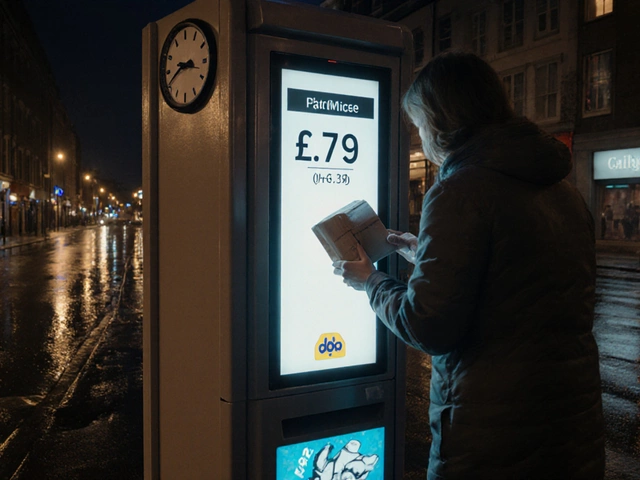Picture this: you're not sending a single box to Amazon, but a mountain of them. That’s when pallet delivery steps in. Instead of individual packages, you stack everything onto a big wooden platform—yep, that's the pallet. Slip it onto a truck, and off it goes straight to Amazon’s warehouse. This method is a lifesaver when you’re dealing with a lot of stuff at once, whether you’re a business or just moving a ton of inventory.
Pallet delivery isn't just reserved for mega-corporations. Even small sellers use it when things get busy, especially after a big promotion or for holiday restocking. It keeps everything together, reduces the chance of things breaking, and makes Amazon’s check-in process way faster. Less fumbling with loose boxes means less waiting for your stuff to hit the digital shelves and start selling.
- What Is Amazon Pallet Delivery?
- Why Use Pallets for Amazon Shipments?
- Tips for Easy and Safe Pallet Shipping
- Common Pitfalls and How to Avoid Them
What Is Amazon Pallet Delivery?
When talking about pallet delivery in Amazon, we're actually looking at how big shipments of products get from businesses to Amazon’s giant warehouses. Instead of sending a bunch of single boxes, companies stack their goods on solid wooden or plastic bases called pallets. These pallets keep all the boxes grouped together, making handling and shipping way easier.
Amazon has specific rules for pallet delivery. For example, they usually want standard 40" x 48" pallets. Pallets shouldn’t stand over 72 inches tall (including the pallet itself), and each one shouldn’t weigh more than 1,500 pounds. You can’t just throw anything on a pallet—everything has to be tightly wrapped and labeled following Amazon’s instructions, or you risk delays and even extra fees.
This method shines with bulk shipments—think shipments with hundreds or thousands of a single item. It saves time and cuts down on individual handling, which lowers the risk that your stuff gets damaged in the process. Amazon’s Fulfillment Centers, where all the magic happens, are built to accept these pallet deliveries quickly, which speeds up restocking your online listings.
- Pallets make unloading super efficient. Forklifts can move a pile of goods in seconds, instead of workers carrying each box by hand.
- If you send your shipment as a pallet delivery, you’ll book a special kind of appointment called a "freight" delivery at Amazon’s receiving dock. No appointment, no unloading—Amazon is strict about this.
Here’s a quick view of what Amazon typically requires for inbound pallets:
| Requirement | Amazon Standard |
|---|---|
| Pallet Size | 40" x 48" |
| Max Pallet Height | 72" (including pallet) |
| Max Pallet Weight | 1,500 lbs |
| Wrapping | Clear stretch wrap, tightly sealed |
Pallet delivery is a game changer if you’re shipping big or heavy loads to Amazon, and it follows a process with clear rules to keep things running smooth and fast.
Why Use Pallets for Amazon Shipments?
Sending stuff to Amazon in bulk? Using a pallet delivery just makes sense. When you stack boxes on a pallet, you keep everything together. It’s easier to move, store, and keep track of in Amazon’s massive warehouses. Amazon straight up asks for pallets on larger inbound shipments—usually when you’re sending more than 150 boxes or your shipment weighs over 1,500 pounds. Still, even below that, pallets can save you a headache.
Speed is everything on Amazon, right? Pallets help your goods get checked in faster at fulfillment centers. Instead of scanning dozens of loose boxes, warehouse workers handle your one big, shrink-wrapped package. That means your products become sellable sooner.
There’s also the whole safety angle. Boxes flying around in transit? More likely to get crushed or lost. Pallets keep freight stacked tight and protected. Less damages equals fewer returns and less time fighting with Amazon’s support team over missing inventory.
Sellers also love pallets for these reasons:
- Bulk orders mean you get to consolidate shipping and might even score a better freight rate.
- Amazon’s prep requirements can be strict. Pallets make it easier to meet those rules—just slap on the right labels and wrap it all up.
- If you’re using Amazon FBA (Fulfillment by Amazon), pallets are the default for the big shipments that actually move the sales needle.
Want a fast stat? According to a 2024 logistics survey, about 42% of Amazon FBA sellers used pallets for at least one shipment last holiday season, mostly to keep up with demand spikes and avoid delays after check-ins got backlogged.
Bottom line: Amazon pallet delivery takes the chaos out of bulk shipping. It keeps things neat, safe, and moving fast, which is what every seller—and customer—wants.

Tips for Easy and Safe Pallet Shipping
If you're thinking about using pallet delivery for your next Amazon shipment, a few smart moves can save you major headaches. The first rule? Never overload your pallet. Stick to the recommended weight limit—Amazon usually caps this at around 1,500 pounds per pallet. Overstuffed pallets get flagged and might even get rejected at the warehouse.
Pack your boxes tight. Gaps in your stack mean boxes can shift during transit and get mangled. To keep things solid, use good stretch wrap around the whole stack and strap it down, so nothing goes sliding off. Use corner protectors if you’ve got fragile products or if you want to look extra professional. Remember to label every pallet with the right shipment ID—one on each visible side makes life way easier for Amazon’s team. Missed barcodes slow everything way down or even cause delays.
Pallet size matters, too. Amazon wants standard 40" x 48" wooden pallets. If you show up with the wrong size, you could face extra charges or get turned away. And don't skip the quality check: broken pallets are a big no-no. Make sure they’re not splintered or missing planks. It’s boring, but it could save you a lost shipment.
- Stack heaviest boxes at the bottom and lighter ones up top.
- Seal every box shut with strong tape—no “just folded” lids.
- Use a mix of shrink wrap and strapping for super stability.
- Keep your pallet under Amazon’s height limit (usually about 72 inches, including the pallet).
- Double-check your shipment plan on Seller Central before you book pickup. The details matter.
Here’s a quick look at what happens when you get it right versus cutting corners:
| Pallet Delivery Factor | Good Practice | What Can Go Wrong |
|---|---|---|
| Weight Limit | Under 1,500 lbs | Pallet rejected or damaged |
| Box Sealing | All boxes taped tight | Boxes burst open, products lost |
| Labeling | Shipment ID on every side | Delayed at warehouse, slow sales |
| Pallet Size | 40" x 48" standard | Extra fees or shipment turned away |
Get these basics right and your Amazon pallet delivery will land safely and get checked in fast—which means your products go live sooner and start making money quicker. That’s what we want, right?
Common Pitfalls and How to Avoid Them
You’d think sending a pallet delivery to Amazon should be simple—just stack, wrap, and ship, right? Not always. Plenty of sellers hit snags that can stall, lose, or even reject your shipment. Knowing what these hang-ups look like is half the battle.
One headache is using the wrong kind of pallet. Amazon only wants standard 40”x48” wooden pallets that aren’t damaged. Broken slats, weird sizes, or non-wood pallets can kill your shipment dead on arrival. Always check for any split pieces or protruding nails. If a pallet won’t hold up under a forklift, it won't make it past the dock.
Another common screw-up is prepping your boxes the wrong way. All Amazon inbound shipments need every box labeled with the correct scannable barcode. Miss a label, use faded ink, or put it in the wrong spot? The warehouse staff won't scan anything, and you might pay extra handling fees. Double-check your barcodes before anything leaves your hands.
It sounds like overkill, but overstacking is a real problem. Amazon has a 72-inch height limit from floor to top of pallet—including everything. Go over, and your load might get split or sent back. Plus, heavy items should always go at the bottom so nothing gets crushed. Here’s a quick table for easy Amazon shipping spec checks:
| Item | Amazon Requirement |
|---|---|
| Pallet Size | 40” x 48” |
| Pallet Height Limit | 72” (including pallet) |
| Max Pallet Weight | 1,500 lbs |
| Pallet Type | Wood, Four-way entry |
Choosing the wrong carrier also trips up a lot of folks. Not every freight company plays nice with Amazon appointments or knows how to deliver on time. Go for carriers that know the drill—bonus if they’ve worked Amazon routes before.
To dodge these pitfalls, here are a few solid tips:
- Always follow Amazon’s shipping process instructions for pallet types and labeling.
- Use good quality shrink wrap and straps to hold boxes tight—shifting loads can lead to refused delivery.
- Book delivery appointments well ahead. Amazon’s docks get packed fast, especially during Black Friday rush or Prime Day season.
- Take photos of your finished pallets. If something goes sideways, proof helps clear up problems fast.
Skipping corners with bulk orders just isn’t worth the risk. The more disciplined you are with details, the smoother your pallet delivery experience with Amazon will be.





